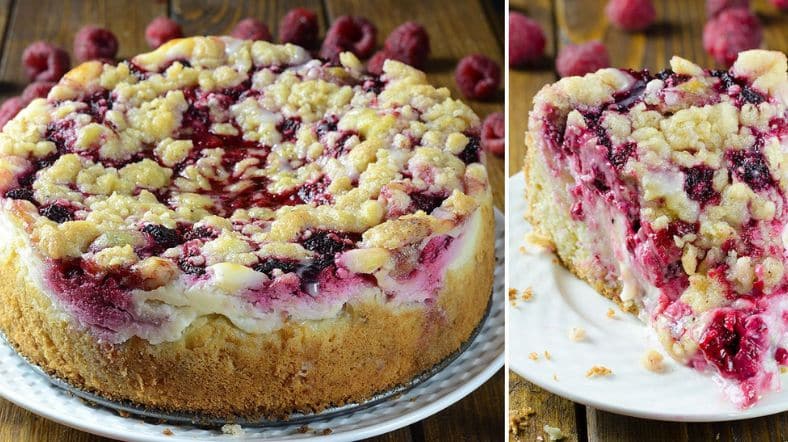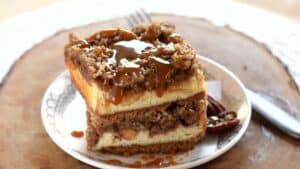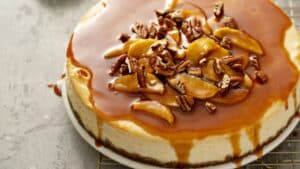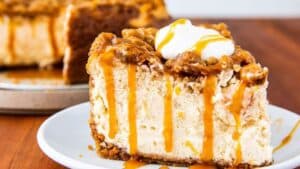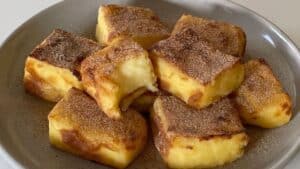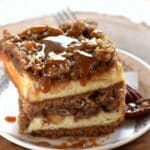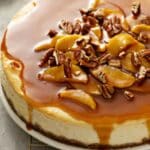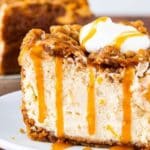Strawberry Cream Cheese Coffee Cake Recipe
It starts with the smell. That warm, butter-drenched sweetness curling out of the oven. The scent alone says something special’s going on. You know this cake isn’t just another dessert. It’s a statement. A rich, tangy, sweet, and crumbly kind of statement. And if you’re a professional, or striving to bake like one, you know the devil’s in the details and the glory’s in the crumb.
This isn’t your average coffee cake. This is a full-on, bakery-grade Strawberry Cream Cheese Coffee Cake, and we’re going deep. We’re breaking down textures, science, missteps, and trade secrets you don’t get from scrolling through Instagram reels.
Because here’s the truth: most recipes online are half-baked. Literally.
Why This Cake Matters
Coffee cake sits in that peculiar spot between breakfast and dessert. It’s the cake that pretends it’s not a cake. The indulgence you’re allowed to eat before 10 a.m. But a Strawberry Cream Cheese Coffee Cake? That’s something else. That’s balance. It’s tart and rich. Light, but with weight. Fresh berries. A cream cheese swirl so good, you could eat it with a spoon.
The addition of real fruit and cream cheese introduces variables pros can’t afford to ignore. Water content, acid balance, fat interference, and textural contrast—it all affects your structure, crumb, and shelf life.
If you’re in a professional kitchen, or trying to bake like you are, here’s what you need to know.
The Layers That Matter
At its core, this cake has three (maybe four) structural elements:
- The Base Batter – tender, just dense enough, and with a tight crumb.
- The Cream Cheese Ribbon – tangy, smooth, and baked to just-set.
- The Strawberry Layer – fresh or cooked fruit, a source of both acid and water.
- The Streusel Topping – buttery, sweet crumble that gives that bakery crunch.
Each of these behaves differently under heat, humidity, and time. Mess up one, and the whole thing flops.
Let’s start with the base.
The Cake Batter: More Than Just a Carrier
A coffee cake isn’t a sponge. It’s not trying to rise to the ceiling. You want a bit of density, but not gummy. The key here is creaming—don’t skip it. Creaming the butter and sugar gives you air. Tiny bubbles that create that plush, bakery-style bite.
Flour matters. Go with all-purpose. Cake flour’s too soft. Bread flour’s a crime here. And don’t overmix. Overmixed batter is like overcooked pasta: no saving it.
A pro tip? A tablespoon of sour cream or Greek yogurt will work magic. It adds tang and keeps the crumb from drying out by day two. Which is rare, because this cake rarely lasts that long.
Cream Cheese Filling: The Silky Problem Solver
Now, the cream cheese.
It’s not just tossed in. It’s a calculated strike. Blend it with a bit of sugar, an egg yolk (never the whole egg—too runny), and a splash of vanilla. The yolk helps it set like custard. Skip it, and you get soup. Beat too much? You’re trapping air, which will puff and crack. Aim for smooth and spreadable, not whipped.
And don’t forget this: cream cheese fights your leavening. Its acidity can mess with baking powder. So balance your pH. A touch more baking soda (a pinch!) can restore that lift.
The Strawberry Dilemma: Fresh vs. Cooked
Fresh strawberries are water bombs. That’s not metaphor. They’re roughly 91% water, which is lovely in a fruit salad, but dangerous in cake.
The pros either macerate them—draw out the water with sugar and drain—or pre-cook them slightly into a compote. That thickens the juices, concentrates the flavor, and keeps the cake from sogging out after day one.
Some bakeries use a stabilized filling with a bit of cornstarch or even gelatin. That’s not cheating. That’s smart. Especially if you’re baking in bulk or need that cake to hold for catering or service.
And always slice strawberries thin. Thick slices sink. Thin slices blend.
Streusel: That Crumbly Crown
The crumb topping is the texture twist that seals the deal.
It’s just butter, sugar, flour, and a pinch of salt—but ratios matter. 1:1:2 is a solid starting point (sugar:butter:flour). You can add oats, nuts, even a whisper of cinnamon. But don’t overdo it. The star here is still the cheese and berries.
Cold butter. Always cold. Cut it in, don’t melt it. The crumbs should clump and scatter. Not smear. Not dust. You want those chunky pebbles that bake into a golden, sweet crunch.
Baking It Right: Temperature & Timing
Low and slow? Nah. Try moderate and patient.
Set your oven to 350°F (175°C). Bake too hot and the top browns before the center sets. Too cool, and the whole thing can collapse. Test it early—but gently. A skewer should come out with a few moist crumbs. Not wet batter. Never dry.
Don’t rely on the toothpick alone. The cream cheese will always come out a bit wet. Use your nose. When it smells deeply golden, check it. Overbake, and you lose the softness that makes this cake special.
Pan Choice: The Hidden Variable
This is overlooked constantly.
Use a 9-inch springform pan or a deep 8×8-inch square. Metal over glass. Glass holds heat longer and can overcook the edges. Metal gives even heat and cleaner edges.
Line the bottom. Grease the sides. Don’t skip this. You’re working with cheese and fruit—things get sticky.
Shelf Life and Storage (Aka: Will It Last?)
This cake is best fresh, day-of or next day. But it can be made ahead.
Refrigerate tightly wrapped for up to 3 days. But here’s the trick: bring it to room temp before serving. Cold dulls flavor. Let it warm up, and the strawberries start to sing again.
Want to freeze it? Freeze without the streusel. Add that fresh before reheating in a 300°F oven.
Common Mistakes Even Experienced Bakers Make
- Overloading the fruit: More berries = more water = soggy cake. Restrain yourself.
- Whipping the cream cheese: You want creamy, not mousse-like.
- Using cold eggs or dairy: Room temp means even mixing and better rise.
- Cutting while hot: Let it set. Seriously. The cream cheese needs to cool before you slice. Or it’ll ooze like a middle school volcano experiment.
Professional Adjustments for Commercial Kitchens
Running a bakery? Catering brunches?
Use stabilized fruit fillings and batch-mix your batter base. Store components separately. Assemble to order.
Swap in freeze-dried strawberries crushed into the batter or crumble for extended shelf life and color intensity.
For higher yield, use hotel pans lined with parchment. Scale up ingredients using weight, not volume. (Looking at you, cup-measurers.)
And test bake everything in your own ovens. No recipe survives contact with the quirks of your convection fan or your overnight staff.
Trends and Twists: What’s New in 2025
- Strawberry-Rhubarb Cream Cheese Cakes are making waves in boutique bakeries—more tart, more drama.
- Some are playing with almond cream instead of streusel, like a frangipane crown.
- Vegan versions using cashew cheese and coconut yogurt are on the rise, but they require totally different techniques. More on that in a future piece.
Wrapping It Up: What This Cake Really Is
It’s not just a breakfast treat. It’s technique wrapped in indulgence. It’s a test of balance—flavor, structure, timing. Done right, this Strawberry Cream Cheese Coffee Cake doesn’t just impress. It stuns.
And in a world full of shortcuts, this is one of the few things still worth doing the long way. Because it tastes like effort. Looks like care. And smells like nostalgia baked into every warm, tangy bite.
So yeah—go make it. But make it right.
Pro Tip Recap:
- Cream butter and sugar well for air.
- Room temp dairy and eggs only.
- Stabilize strawberries or pre-cook them.
- Keep cream cheese smooth, not whipped.
- Use a springform pan. Metal > glass.
- Let it cool. Seriously.
- Don’t overmix anything. Ever.
This isn’t a throw-together dessert. It’s a showcase piece. And now you’ve got the knowledge to make it sing.
Because here’s the secret every pastry chef knows: a cake like this isn’t just food.
It’s craft.
